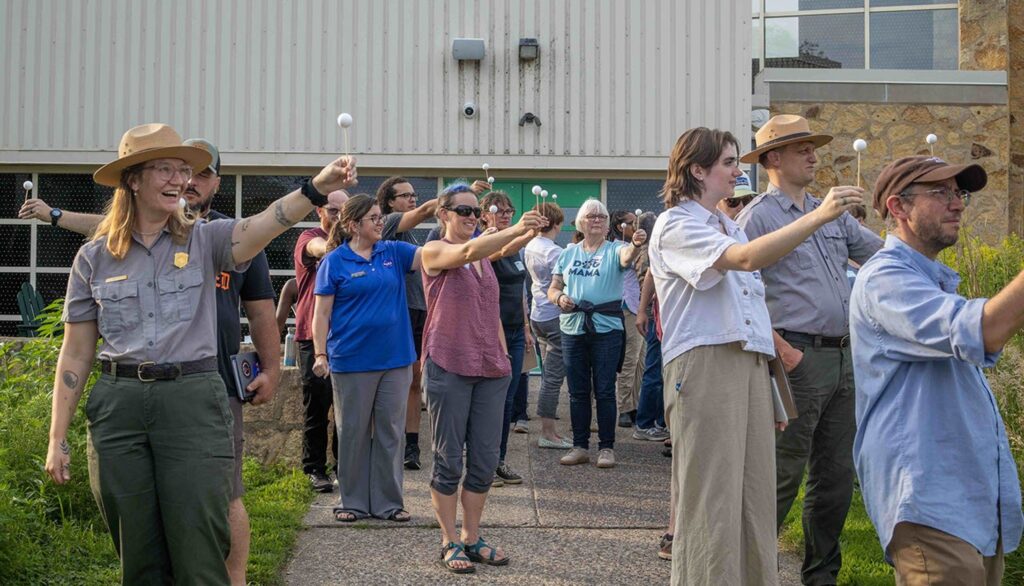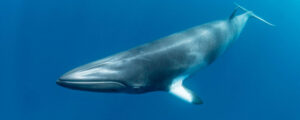
When you think about national park and public land astronomy programs, you might picture remote locations far from city lights. However, a recent NASA Earth to Sky training, funded by NASA’s Science Activation Program, challenges that assumption. This initiative demonstrates how urban parks, wildlife refuges, museums, and green spaces can serve as incredible venues for connecting communities with space science. By facilitating programs in urban spaces, NASA aims to reach people where they already live, work, and recreate, creating opportunities for ongoing engagement. Urban astronomy program participants can discover that the skies above their neighborhoods hold the same wonders as those in remote locations.
Innovative Training in Minneapolis-St. Paul
During the first week of August in 2025, NASA Earth to Sky collaborated with the National Park Service and U.S. Fish and Wildlife Service to deliver an innovative astronomy training program titled “Rivers of Stars and Stories: Interpreting the Northern Night Sky” at Minnesota Valley National Wildlife Refuge in Minneapolis-St. Paul. This three-day course brought together 28 park ranger interpreters, environmental educators, and outdoor communicators from across the Twin Cities area. The focus was on engaging urban audiences with the wonders of space science by leveraging the benefits of metropolitan spaces and the unique opportunities that city skies provide.
Throughout this immersive training, participants explored a wide range of topics, from lunar observations and aurora science to NASA’s Artemis Program and astrobiology. The training empowered participants by affirming that everyone can be an effective stargazer and night sky storyteller, transforming beginners into confident astronomy communicators. One participant noted,
“I went from not knowing much of anything to having a much better grasp on basic concepts and most importantly, where to find more resources!”
Building a Community of Practice
In addition to sharing resources, this training launched a community of practice where communicators can continue to collaborate. Participants engaged in discussions on how to respectfully incorporate local indigenous perspectives into astronomy programming and honor the traditional stewards of the land while avoiding appropriation or misrepresentation of indigenous science.
The course also created a lasting community connection to NASA through presentations by NASA experts and demonstrations of NASA activity toolkits. As one participant noted in the evaluation,
“This is just the start of a long learning journey, but I know now where to look and how to find answers.”
Toolkits and resources shared included GLOBE (Global Learning & Observation to Benefit the Environment) Observer’s NUBE (cloud) game, Our Dynamic Sun by the NASA Heliophysics Education Activation Team (HEAT), the Night Sky Network, the Aurorasaurus Citizen Science project, and the local Solar System Ambassador Network.
Strategic Goals and Community Impact
Participants’ sense of belonging to the Earth to Sky community increased dramatically. These outcomes support NASA’s strategic goal of building sustained public engagement with Earth and space science. The overwhelmingly positive feedback, with 100% of participants expressing interest in taking more courses like this, demonstrates the tremendous value of Earth to Sky’s collaboration with the National Park Service and U.S. Fish and Wildlife Service, as all agencies’ public communication goals are addressed.
This kind of collaborative work is crucial because it builds a network of science communicators who can reach thousands of visitors across Minneapolis-St. Paul’s parks, nature centers, and outdoor spaces. By training local informal educators to confidently share NASA’s discoveries and missions, the program expands access to space science for urban audiences throughout the Twin Cities region.
Looking Forward: Expanding Urban Space Science Engagement
The announcement comes as urban areas increasingly seek ways to integrate science education into community spaces. This development follows a growing recognition of the need to make science accessible to diverse populations who might not have the opportunity to travel to remote locations. By bringing space science into urban parks, NASA not only enriches local educational offerings but also fosters a broader appreciation for the cosmos among city dwellers.
As NASA continues to innovate in its outreach efforts, the success of the Earth to Sky program in Minneapolis-St. Paul could serve as a model for other cities across the United States. By leveraging urban spaces, NASA and its partners can create a more inclusive environment for science education, ensuring that the wonders of the night sky are available to all.





